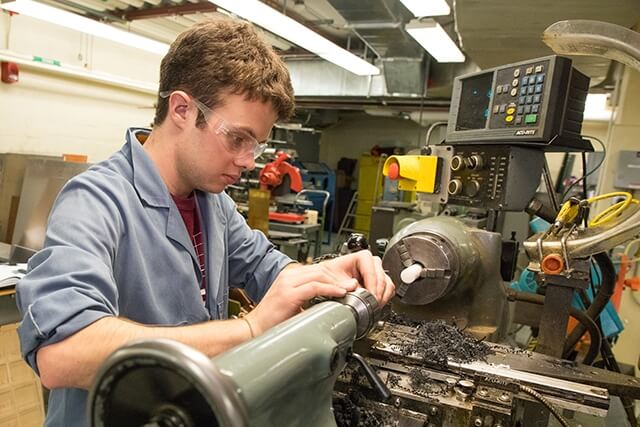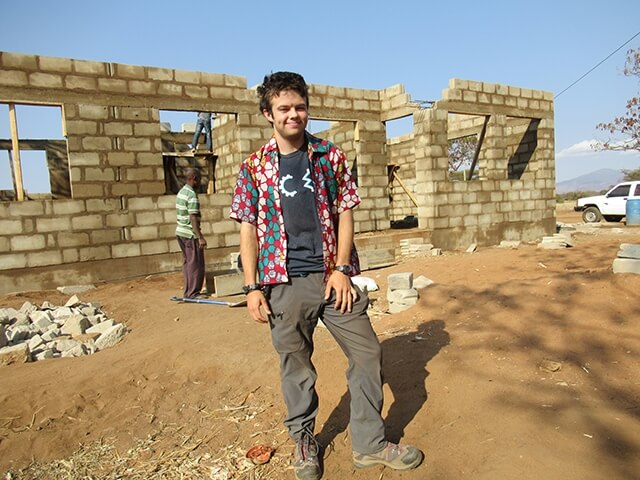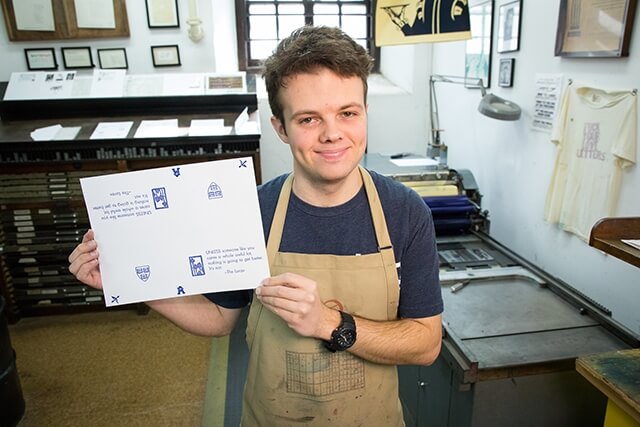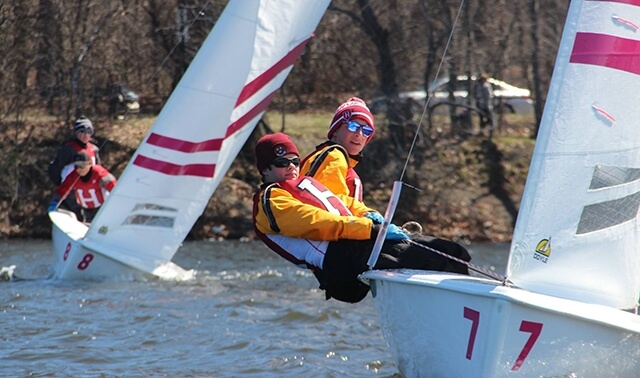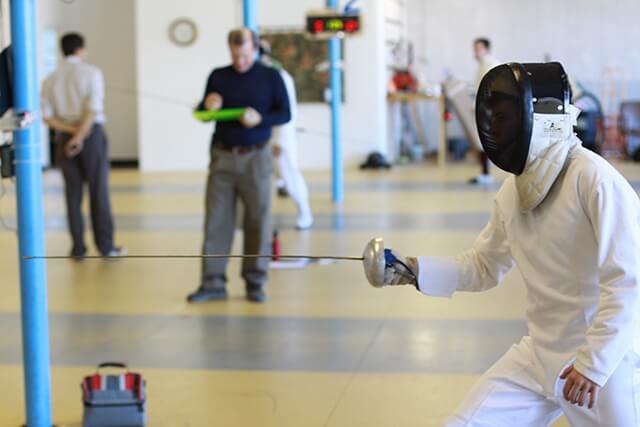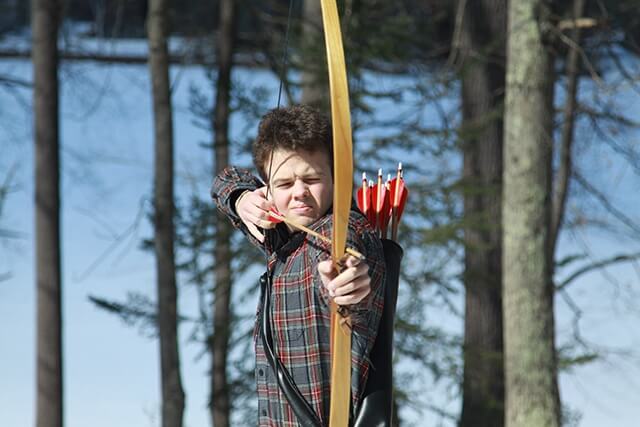How did you become interested in science and engineering?
Both my parents are mechanical engineers. My grandfather was an inventor, and his father was an inventor. So I grew up learning how amazing it is to be able to see a problem and then design and build your own solution.
My grandfather was a metallurgist by trade, and actually wrote one of the premier textbooks for brazing. He pioneered a lot of the techniques that are still used in industry to this day. Coming from an entire family of people who loved being able to solve problems really inspired me to go into engineering.
What was one of your most poignant academic experiences?
Taking some of my general education requirements really pushed me out of my bounds. I took a class in Egyptology a year ago. It was a relatively easy class, but it was something I had never studied before—something I knew very little about but had always been interested in. Having the ability to learn something in depth from an expert in the field was an amazing experience that taught me the value of learning how another field looks at the world and helped broaden my perspective.
Name: Robert Anderson
Concentration: Mechanical engineering
Graduation year: 2019
Hometown: Longmeadow, Mass.
Hobbies: Woodworking, archery, fencing, sailing, letter press, waterskiing, hiking, downhill skiing, classic car restoration, metalworking, drawing, camping, kendo
Fun fact: Anderson drove to high school in a car that he rebuilt from the ground up.
Anderson works on his senior thesis project. (Photo by Eliza Grinnell/SEAS Communications)
Tell us about your involvement in the Harvard Undergraduate Robotics Club.
One of the major projects I worked on was the Mars Rover project, where we built a rover designed as if it was going to Mars. We created a six-legged walking robot, which had legs instead of wheels to increase its mobility so it could climb over rocks. It was able to walk down stairs and across jagged terrain, as well as having extra legs so that if one were to get damaged or broken, it was still able to perform tasks. It was a new, challenging design that we pioneered based on research done by Boston Dynamics and other groups, trying to push the envelope and see if we could scale it up and make it bigger, stronger, and able to carry more weight.
Tell us about your experiences with Engineers without Borders (EWB).
Anderson traveled to Tanzania with Engineers Without Borders to lead the team building housing for teachers. (Photo provided by Robert Anderson)
After freshman year, I dove in headfirst and started leading an EWB project with a few of my classmates. We spent over a year planning, researching, and coming up with different designs for a house that many teachers could live in for a small school in rural Tanzania. I was lucky enough to go to Tanzania with a few other students and professional engineers and lead the team for part of the trip to actually build the teacher housing.
The biggest challenges we faced came down to the fact that most of what we had designed, planned, and researched fell apart within minutes after we arrived, due to the fact that the materials available were different than those we had planned to use. We had to alter our designs to make sure they were going to be strong enough, literally by the light of the moon the night before construction was to begin, standing next to the foundation that was about to be poured. As frustrating as it was initially, that was an incredibly useful experience because it tested me and the rest of the team to apply the engineering skills we had learned in real-time.
How do you use the Bow and Arrow Press at Adams House?
I found out about the Bow and Arrow Press my sophomore year, and ever since then, I’ve been enthralled by the ability to use traditional methods to make
While using a letter press to make cards involves more work than simply typing a message on a computer, Anderson said it instills in him more pride in what he creates. (Photo by Eliza Grinnell/SEAS Communications)
all sorts of letterpress art and cards. Rather than sitting at your computer and typing out what you want to say, to write a simple letter using a press, you have to arrange it all, find all the individuals letters in lead, space them out, fit them together, put them on the press, ink the press, run it through to make one copy of what you want, and then clean off all the ink on the type, rollers, and components of the press, before putting it all back into place. There are a lot of challenges with the process, but it also provides me with a lot more pride in what I make. You can see and feel the difference in the text, where it embosses everything it prints because of the pressure of the press.
What has it been like sailing for Harvard?
Anderson enjoys the mixture of strategy and physical challenges involved in sailing. (Photo provided by Robert Anderson)
I had sailed a little bit when I was growing up, so I figured it would be interesting to try athletics while in college. To be a good sailor, it is a combination of mental excellence as well as physical performance. You have to maneuver the boat using your own physical skills, but at the same time, you have to observe the courses to see where the wind is strongest and what the other boats are doing. There is a lot of strategy involved. It is like going to the gym and playing chess at the same time. That combination of physical skill and tactical skills is what I love about the sport.
What have you enjoyed about club fencing?
Club fencing is a fun experience because it is a very open community. Fencing is such a fun sport that combines a lot of strategy with physical agility and
The open, welcoming community of club fencers at Harvard is one of the things Anderson has enjoyed most about his involvement in the sport. (Photo provided by Robert Anderson)
strength. I fence epee, where your goal is to stab the other person, but you can target any part of the body. I like fencing epee because it opens up the complexity by giving you more locations to strike, but also more locations you have to defend. There’s a lot of intricacy in deciding your actions as well as perfecting your physical responses so you can execute the strategy you develop.
What is your senior thesis project?
I’m working on a device to clean paint rollers. A lot of paint rollers end up being used once and then thrown away. The device I am designing uses water pressure to wash and then dry the rollers so they can be reused quickly. The biggest challenges of my senior thesis were getting all of the components to fit and work well together, while designing a device that is relatively affordable. It would be a very simple problem to solve if I could make a device that would cost $150. But to make it affordable so that people would use it rather than just throwing paint rollers away and buying new ones has been a very hard challenge.
What are your plans for after graduation?
In addition to his interest in swords, Anderson also shoots medieval longbow. (Photo by Robert Anderson)
I have the honor of being awarded a Michael C. Rockefeller Fellowship to study swordsmithing in Toledo, Spain. I’m going to be working with a traditional master to learn the nuances of the ancient art of sword making. That opportunity really appeals to me because it combines a lot of the aspects I’ve been interested in my whole life. I’ve studied and practiced fencing since elementary school. I also picked up kendo, which is a Japanese style of sword fighting. I’ve also been interested in the medieval history of Europe, particularly castles and weaponry (I also shoot medieval longbow.) Making swords in their traditional form also incorporates my interest in materials science and engineering.
Swordsmithing is something I don’t know too much about yet, which is one of the main reasons I’m so excited about this opportunity to learn a new skill. I hope, as an engineer, having studied heat transfer, materials science, and thermodynamics, that I will be able to get a much deeper understanding of the traditional processes.
Looking beyond your next year in Spain, what are your long-term plans?
My long-term plan is to eventually start an engineering company. I want to have a team of engineers, designers, and manufacturers who have the resources to identify a problem and then solve that problem to make the world a better place, but do that on a larger scale than I could ever do alone.
